27 Best Ways to Save Money On a USA Road Trip
The continental US spans four time zones, making it a remarkable country in terms of culture and geography. Any road trip across America is a unique and fascinating experience. I’ve been fortunate to travel extensively in the USA, and one common question I receive is: “What are the best ways to save money on a USA road trip?” This is especially relevant when planning long-term self-drive journeys such as Route 66 or along the Pacific Coast Highway.
In this post, I aim to assist you in determining the cost of traveling in the United States, enabling you to budget accordingly for your upcoming trip. I will also provide practical tips to help you sustain your journey, whether it’s for a month-long adventure or a quick weekend escape. Additionally, I’ll share some quick and effective money-saving strategies to implement along the way.
Let’s delve into some of the major expenses you might encounter on your USA road trip

Best Ways to Save Money on a USA Road Trip
Road tripping across the US may not always be inexpensive. Fuel costs can accumulate quickly, and dining out while on the road can strain your budget. Without awareness of your spending patterns and unnecessary expenses, you risk exceeding your budget within a few days. Whether you opt for luxury accommodations and fine dining or seek budget-friendly options like cheap meals and motels, your budget will naturally vary.
Furthermore, prices fluctuate across different US states, with items like food, beverages, and gas often being more costly in major cities such as San Francisco and New York.
In a nutshell, by setting your daily budget between $80 and $200 per day you’ll be able to see quite a lot on your road trip. Again, this amount will vary depending on your travel style, location, and which attractions you want to visit. The magic number I try to stay under each day is $90. If I go over my budget, I try to make up for it the next day by spending less than $90. It’s all about balance!
There are unavoidable expenses on any vacation and the worst enemies of any road-tripper, which are:
- Food
- Transport
- Sightseeing
- Accommodation
For each category, I break down how to reduce your expenses and provide an overview of budget, mid-range, and high-end prices.
How to Save Money on Food on a USA Road Trip
On a road trip, there are two kinds of fuel: one that keeps your car running and the other that keeps you going. Everyone aims to eat healthily on a road trip, which is why it is the first money-saving section in this guide. Trying out new foods is an excellent way to understand a culture, but it can become costly.
While road tripping through the Deep South, I discovered numerous ways to save money on food without sacrificing the experience of trying new dishes. Here are some proven methods to save hundreds of dollars on food during a road trip across the United States:
1. Bring Your Own Food
Bringing your food from home is perhaps the simplest way to save money on meals during a road trip in the USA. Visit a supermarket or Walmart in advance and purchase a variety of non-perishable snacks (and perhaps some large waters) in bulk. Nuts, granola bars, dark chocolate, and other hearty snacks rich in protein and fiber can keep you full and content.
What to Pack in a Cooler For a Road Trip
To take it a step further, avoid overpaying for greasy fast food by packing a small cooler with sandwiches, fruits, chopped veggies, and dips. Consider bringing a portable stove to cook your main meals. Dishes like pan bagnat with fennel and sweet potato peanut stew are affordable and delicious options for road tripping on a budget. With numerous scenic spots along routes like New England’s high country, you can enjoy dinner with a view at various stopovers.
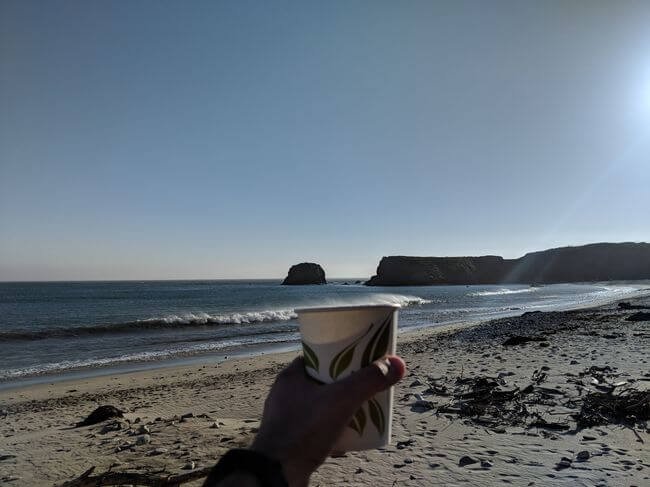
Alternatively, many Airbnb properties come equipped with cooking facilities such as a gas stove and kitchen sink. Since they typically include cookware and utensils, you can certainly save money by preparing your own meals (and coffee!) occasionally!
2. Bring Plenty of Water
In arid regions, salty peanuts can leave you thirsty. Invest in a 5-gallon bottle and refill it at parks, campgrounds, and drinking fountains to stay hydrated affordably. Continuously purchasing new bottles can quickly add up, so having a reusable water bottle or two is crucial for extended journeys. It also plays a key role in reducing plastic waste and helping the environment.
If you plan on engaging in activities like hiking, cycling, or exploring the southern states of the U.S., ensure you have an ample supply of water. Additionally, drinking water can help curb appetite and cravings, as dehydration is sometimes mistaken for hunger. Stay hydrated!
3. Go Local
Frequenting local eateries for every meal can deplete your funds rapidly, but charming local establishments offer a more unique dining experience and are often more budget-friendly.
Here’s the rationale: Opting for local cuisine enhances the joy of travel. Treat yourself to a meal or two out—American portion sizes are typically generous, making it a worthwhile.
But avoid places like McDonald’s (unless you need free Wi-Fi), chain restaurants, and eateries you have in your local area, as they are often overpriced. I recommend using Yelp to explore popular cuisines and highly-rated restaurants.
Pro Tip: To secure the best deals, look for happy hours at local restaurants. Enjoy mingling with locals while taking advantage of happy hour prices during off-peak hours or daily specials. Utilize these opportunities to prevent overspending on food during your USA road trip.
4. Cook For Yourself
While having access to a kitchen in Airbnb properties is convenient, nothing beats the ability to cook meals when traveling in a campervan or RV. Larger RVs offer ample space, enabling you to pack various ingredients and enhance your cooking experience.
Having the ability to store leftovers in plastic containers is advantageous. Consider bringing essentials like a cutting board, a quality knife, and a 2-burner propane stove. This setup allows you to prepare multiple dishes simultaneously, use larger pots and pans, and cook more efficiently.
5. Take Advantage of Free Breakfasts
If you’re lodging in hotels during your road trip, opt for accommodations that provide complimentary breakfast. This covers one meal each day, reducing your daily expenses. Consider skipping expensive dinners and instead explore local restaurants for breakfast or lunch to sample regional specialties while sticking to budget-friendly meal options.
6. Limit Alcohol Consuprtion
While it’s tempting to unwind with a cold drink at the end of the day, excessive drinking can swiftly inflate your road trip expenses. Consider reducing alcohol consumption to maintain a budget-friendly journey.
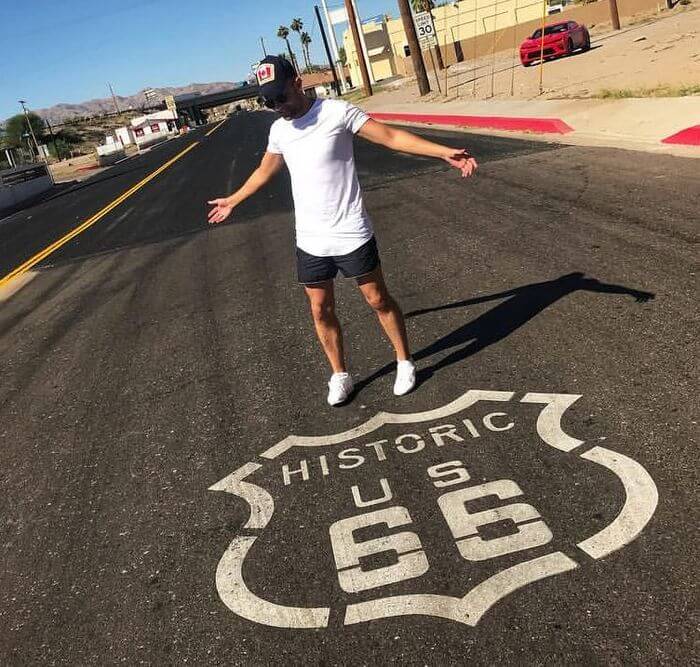
While I’m not here to tell you to completely give up alcohol, bringing your own booze to enjoy can actually help you save a good amount of money. If exploring the bar scene is on your agenda, ask the locals where the cool hangouts are, scroll through Yelp reviews, search for happy hour deals, and visit the local brewery.
Food Costs in the United States
Food costs in the United States can vary significantly depending on where you dine and what type of establishments you frequent. Here is a general overview of food costs you can expect in the USA:
Fast Food Chains
Fast food chains like McDonald’s, Burger King, and Taco Bell offer budget-friendly meal options, with prices typically ranging from $5 to $10 per meal.
Casual Dining Restaurants
Casual dining restaurants such as Applebee’s, Chili’s, and Olive Garden offer a mid-range dining experience, with prices averaging between $10 to $20 per meal.
Local Eateries
Local eateries and diners can provide affordable dining options, with prices varying based on the location and type of cuisine.
Fine Dining Restaurants
Fine dining establishments offer upscale dining experiences with prices ranging from $30 to $100 or more per person, depending on the restaurant and menu.
Grocery Stores
Purchasing groceries from supermarkets like Walmart, Kroger, or Safeway can be a cost-effective option for preparing your meals. Prices for groceries vary based on the items purchased.
Food Trucks and Street Food
Food trucks and street vendors offer a diverse range of affordable and delicious options, with prices usually ranging from $5 to $15 per meal.
Specialty and Ethnic Restaurants
Specialty and ethnic restaurants may offer unique dining experiences with prices varying depending on the cuisine and location.
Overall, food costs in the United States can be managed based on your dining preferences and budget. By exploring a mix of dining options, including cooking your meals, taking advantage of free breakfasts, and seeking out local eateries and happy hour deals, you can enjoy a variety of culinary experiences while staying within your budget during your road trip.
How to Save Money on Transportation on a USA Road Trip
On my 1-month road trip across the United States, gas was the biggest expense. It adds up quickly, especially if you’re driving a large vehicle or a van. I’m sharing the best tips for saving money on gas. Additionally, below, you’ll find a few practical ways to save money if you will be renting a car.
7. Rent a car (or a campervan)
If you don’t have a car of your own, or if you’re coming from overseas, you might be considering renting a car for your road trip. I like to use RentalCars.com to find a good deal. They compare the largest car rental companies in the U.S. to find the lowest price.
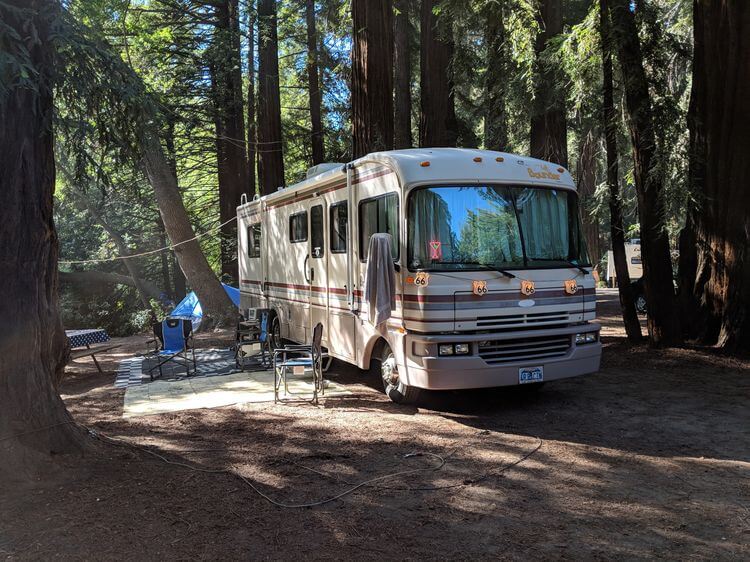
Do you want to experience the freedom of living and traveling in a van? If so, I have a suggestion for you! Consider renting a vehicle from EscapeCampervans. They have 13 different locations in the United States and Canada, offering fully equipped vans for an epic road trip. What’s great is that their rates are affordable.
8. Plan Your Route
Mapping out your route is essential. Plan where you’re going to avoid unnecessary backtracking. While getting lost can lead to unexpected adventures, the extra gas expenses can add up over time.
9. Check Your Vehicle for Fuelefficiency
Prioritize a check-up for your car before hitting the road. Ensure your fluid levels are adequate, lights are functioning correctly, wiper blades are in good condition, and the air filter is clean. These factors can impact your fuel efficiency.
Additionally, staying on top of oil changes during your journey can prevent potential issues and save you money in the long term. Monitoring tire pressure is crucial, as underinflated tires can lead to decreased gas mileage.
Regular maintenance and quick tune-ups help prevent breakdowns that could result in significant expenses. Cutting your road trip short due to vehicle issues is not ideal. With some planning and maintenance, you can easily avoid common car problems. If you’re unsure about car maintenance, consider taking your vehicle to an auto repair shop before embarking on your trip
10. Drive Carefully and Get Roadside Assistance
Your driving habits significantly impact your car’s fuel efficiency. This is particularly noticeable when driving a VW van. Here are some fundamental tips to consider:
Driving at a steady speed of 55 mph can reduce your vehicle’s fuel consumption, making long road trips more economical. Always drive at a reasonable speed, adhere to speed limits (average cost of a speeding ticket ranges from a fine of $150 to $200!), and avoid abrupt acceleration and braking. If your vehicle is equipped with cruise control, utilize it to regulate fuel consumption and maintain a consistent speed on highways.
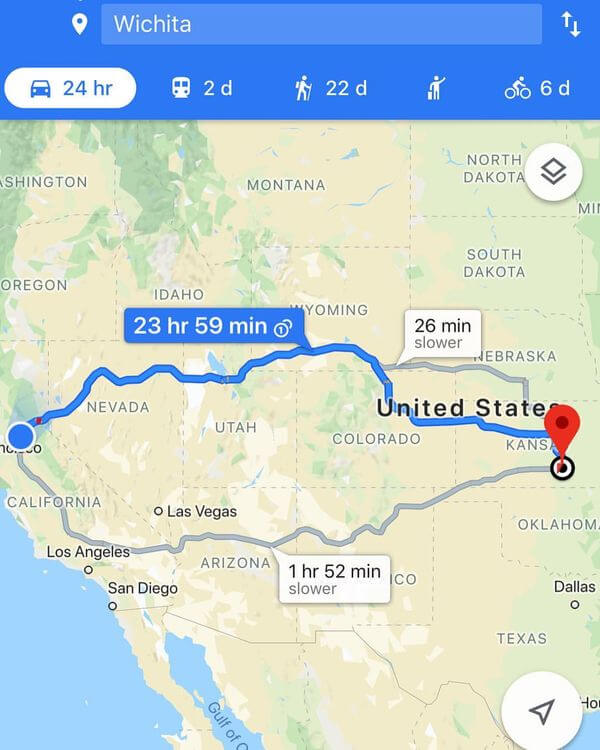
Before you leave, ensure you have reliable roadside assistance. It can be as inexpensive as $5 per month but can prove invaluable in case of a flat tire, dead battery, or any other breakdown that may occur. By paying a small monthly fee, you can avoid hefty costs for emergency services or towing your vehicle.
The American Automobile Association (AAA) provides roadside assistance, travel services, insurance, and dependable breakdown support. To locate your local AAA/CAA club, enter your postal code. For those in the UK, consider checking out MoneySupermarket for similar services.
It’s also beneficial to have the following items on hand:
- A spare tire and necessary tools for changing it;
- Jerrycan;
- Jumper cables for jump-starting a dead battery;
- Flashlight (as driving accidents are more common at night);
- Safety triangle;
- Warm clothes;
- Water and non-perishable food items.
By being prepared with these essentials, you’ll be ready for unexpected situations on the road.
11. Take Advantage of Weekly Rates
Keep in mind that car rental prices can vary based on whether you opt for daily or weekly rentals. You can enjoy significant savings with longer-term rentals, as weekly rates are typically lower than daily rates. Additionally, car rental companies often appreciate longer rentals and may offer a complimentary upgrade to a more spacious vehicle.
In my experience, I often opt for the smallest car and end up driving a vehicle that, by European standards, would be considered a mid-range vehicle – spacious enough to comfortably seat three adults with sufficient luggage space.
12. Avoid One-Way Trips
When embarking on an extensive cross-country American road trip, the temptation to start in one location and finish elsewhere is natural. However, car rental companies typically charge a fee to cover the cost of returning the car to its original location.
These fees vary depending on the route’s popularity, and in many cases, they are unavoidable. It’s important to note that many online price comparison sites may not include these fees in their quotes. I have found Enterprise to offer good value in reducing one-way fees.
13. Use Public Transportation
In major cities, consider parking outside the city and utilizing public transportation to reach downtown areas. This can help you avoid exorbitant parking fees.
14. Avoid Additional Fees
Car rental companies often generate revenue by encouraging customers to sign up for various additional services, such as damage waiver fees and extra insurance. These additional services can sometimes cost more than the rental itself.
If you are paying for your rental with a credit card, your credit card company may offer its own rental car insurance. Before opting for the rental company’s insurance, compare both options. Additionally, carefully consider whether you truly need to spend extra on the rental company’s collision damage coverage.
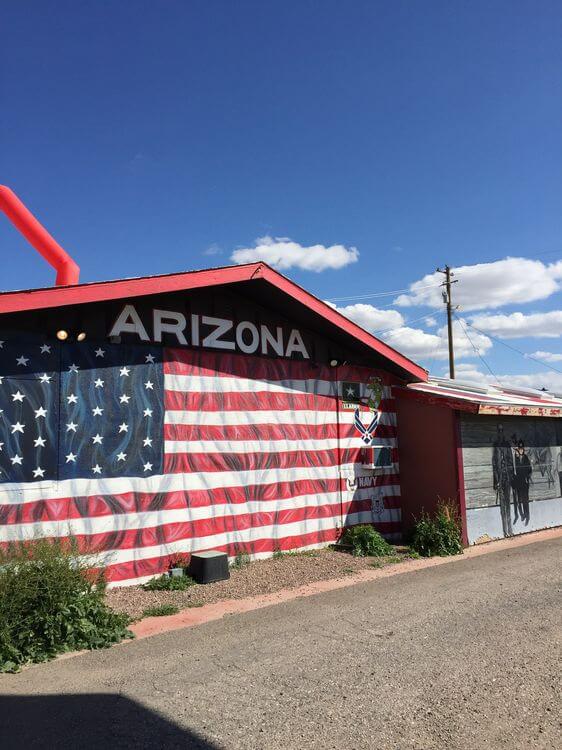
That is why knowing exactly what cover you already have is so important. By being aware of your existing coverage, you can navigate this process without spending more money than necessary.
At some rental car companies, you have the option to prepay for gas, which can be convenient, especially when heading to an early morning flight. However, you’re unlikely to return the car on empty, so it’s advisable to fill up the rental car yourself to avoid giving agencies free gas. You can often find cheaper gas prices at nearby stations. Remember to refuel, as failing to do so could result in a substantial bill upon drop-off.
15. Find the Lowest Cheap Gas Prices
Your vehicle requires gas to operate, and prices can vary significantly among gas stations. Generally, gas stations located off the highway tend to be more expensive than those just a short drive away from the main road. Consider using a site or app like GasBuddy to compare prices and locate savings. GasBuddy allows you to input your location and displays the cheapest gas stations in your vicinity, potentially saving you money during your travels.
Google Maps is another valuable tool. By typing “gas” in the search bar, you can view nearby gas stations along with their respective prices per gallon. Even small price differences can add up, especially if you’re filling jerrycans for additional fuel.
Additionally, Google Maps offers the option to “avoid tolls.” If you know that using a toll road isn’t beneficial for your trip, planning ahead and finding toll-free routes can be advantageous.
16. Use a Gas Rewards Card
Consider obtaining a credit card with rewards for gas transactions to secure cheaper fuel prices before embarking on your road trip. Use this card whenever you refuel your car to earn rewards. Accumulate enough points, and you can redeem them for gas on future fill-ups, ultimately saving you money.
Transport Costs for Travel in the United States
Traveling in the USA typically requires a car. While there are alternative transportation options, discussing them is beyond the scope of this post. It’s important to note that many rental car companies charge high daily underage fees for drivers under 25 years old.
Price of Car Rental in the USA
Budget: $150 – $250 per week will get you a budget car that will fit two people and 2-3 medium-sized bags or suitcases;
Mid-range: $200 – $350 for a mid-range car that will fit a group of four and their stuff;
High-end: $450+ for a campervan, large crossovers or luxury vehicle.
Sightseeing Costs when Travelling in the USA
Now, let’s explore how to save money on activities during a USA road trip. I can’t envision a road trip without stopping to snap cool shots, marvel at natural landmarks, and engage in some hiking.
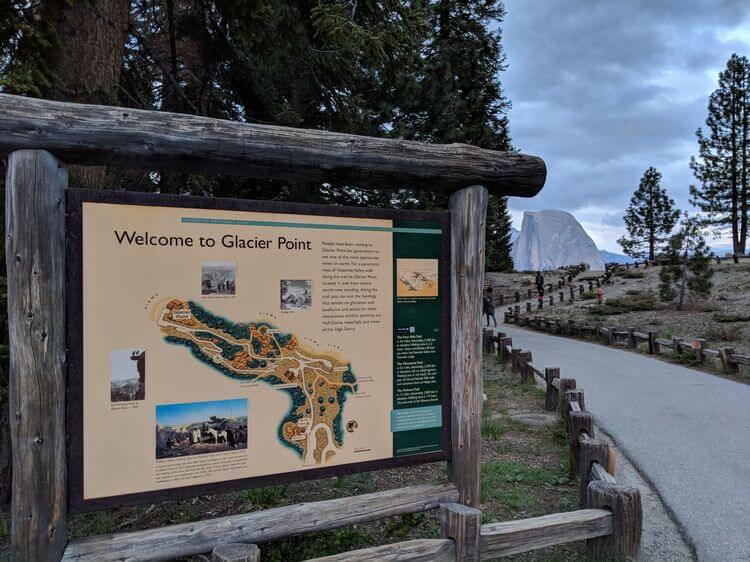
Of course, the type of sightseeing activities you choose to engage in will vary based on your personal interests. However, I assume you might be interested in visiting attractions, museums, national parks, and breathtaking landscapes. In general, I recommend budgeting at least $10 – $30 per person per day for sightseeing expenses. Here are some tips to help you save money on a USA road trip while still enjoying some bucket list activities.
17. Get a National Park Pass
One of the highlights of road-tripping in the USA is exploring its incredible National Parks. If you plan to visit more than three National Parks during your road trip, investing in a National Park Pass is a wise decision. While priced at $80, it easily covers entrance fees for your vehicle and all passengers, ultimately saving you money on admissions. If you intend to spend a significant amount of time in a specific state or region, consider looking into local passes as well.
18. Purchase a City Pass
Consider purchasing a City Pass if you anticipate visiting numerous popular attractions on your road trip. For instance, companies like CityPass offer passes for cities such as New York, Las Vegas, New Orleans, and San Francisco. These passes provide access to a variety of attractions and often allow you to skip lines. They are typically cost-effective, especially for larger groups of travelers.
19. Visit For Free
While it may sound challenging, one way to explore museums and attractions in the USA for free is to take advantage of free days. These may occur on specific days of the month or coincide with national “Free Museum Day” events. Simply conduct a quick Google search to identify free entry opportunities for the city and type of attraction you are interested in.
Alternatively, there are numerous free (or inexpensive!) activities to enjoy throughout the USA. Once again, type “free things to do in [your location here]” in the search bar to discover cost-effective options. Some of the free activities I typically seek out include hikes, local markets, free live music events, camping sites, beaches, and museums, among others.
20. Use Concessions
If you belong to a specific group, such as individuals with disabilities, military personnel, or members of certain organizations, you may be eligible for discounts or even free admission at various attractions. Conduct research in advance to determine what benefits you are entitled to.
21. Plan out Splurges in Advance
While it’s tempting to splurge on everything during a vacation—eating out frequently, booking expensive tours, and acquiring numerous souvenirs—it’s easy to exceed your budget. Instead, limit your indulgences by planning them in advance. Consider purchasing meaningful souvenirs rather than accumulating items that may fill an extra suitcase.
22. Stay Frugal in Heavily Touristed Areas
Popular tourist destinations often come with high costs. For instance, free parking may be available near paid parking lots. Some agencies may charge exorbitant prices for tours when more affordable options are readily available nearby or can be self-guided. Visit the agency’s website, study their itinerary, adjust it based on your interests, and create your own DIY city tour. This approach can help you save money while exploring heavily touristed areas.
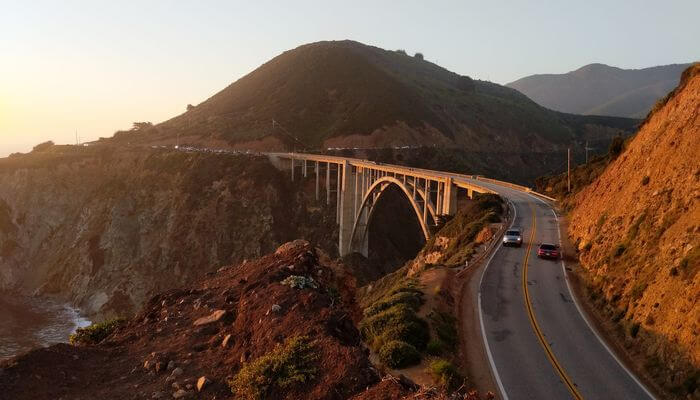
However, if tours are important to you, plan these into your travels as splurges.
23. Travel During the Offseason
Not only you’ll encounter fewer tourists and shorter lines, but also save some money by traveling outside of peak season. There have been a few times when I flat out skipped a major tourist attraction, like museums, temples, and monuments, because the lines were unbearably long.
The last thing you want to do when exploring a new place on a road trip is to waste your precious time doing absolutely nothing while waiting in line.
The shoulder season can offer really cheap prices, nice weather, and all the same attractions free of crowds. Consider this quieter time a better way to visit a destination. The offseason is also a perfect time to meet locals and really see what the location is like when it isn’t high time to be there. Take a chance and see what you can find.
How to Save Money on Accommodation on a USA Road Trip
Accommodation is one of the biggest expenses of a road trip. However, there are ways to reduce accommodation costs for travel in the USA. The country has a range of accommodation options to meet pretty much every niche, from cozy B&B’s to budget motels to hostels to campsites to modern luxury hotels. Finding cheap accommodation is one of the best ways to save money on a great American road trip.
Here’s how:
24. Find Free Campsites
To secure the best value accommodation, camping can present a straightforward (or sometimes challenging) option for saving money during a USA road trip. If your vehicle offers sufficient space, bring along pillows and extra blankets for a quick and makeshift night of sleep. Alternatively, consider renting a campervan for your journey. Depending on the region and duration of your road trip, renting a campervan might still be a more cost-effective option than staying in hotels every night.
While some campsites offer free accommodation, others may charge between $34 – $40 per night. These costs can accumulate quickly, particularly during a long-term USA road trip or when traveling on a tight budget. Fortunately, some campgrounds only require a small fee for overnight stays, so it’s advisable to keep some cash on hand just in case.
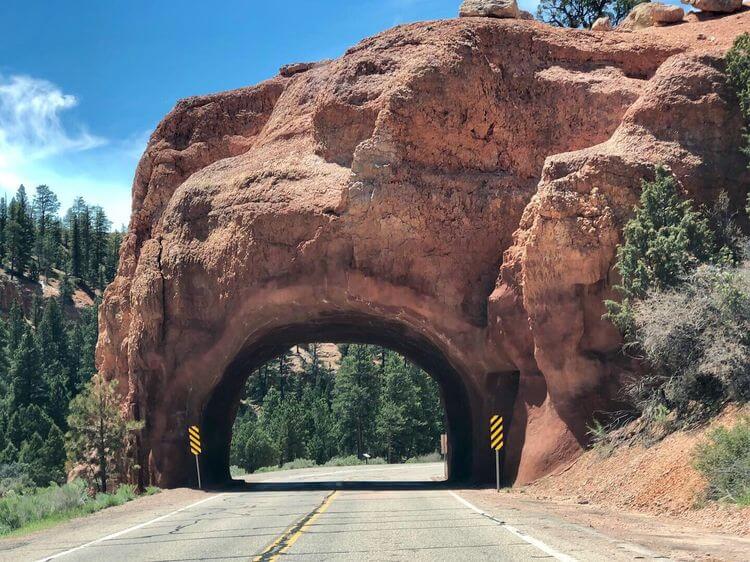
As a keen camper during my road trips, I have discovered that National Forests often offer more affordable or even free camping options. When exploring the Western states such as Arizona, California, Colorado, Idaho, and Nevada, Bureau of Land Management (BLM) lands stand out as exceptional choices. BLM lands provide intriguing camping opportunities at no cost. Visit recreation.gov to access a wide range of outdoor activities on public lands, including national parks and national forests.
Want more?
Some states have vast expanses of land where you can legally park overnight and sleep. This type of camping is often referred to as free camping, pirate camping, or boondocking. While it may not always be the most convenient accommodation option, it serves as a great solution when you’re looking to save money on lodging expenses.
Unlike paid campsites, dispersed campsites typically lack many of the amenities you would expect, such as restrooms, showers, and dining facilities. However, what you do receive is a breathtaking view of the star-filled sky, the rustling of the wind through the trees, and the satisfaction of venturing off the beaten path.
Finding a Campsite
My favorite tools for scoring cheap campsites are Campendium, Freecampsites, and iOverlander. These are the great road trip resources that list the price of the site as well as what is available there. Perfect for any budget road trip in the USA.
25. Stay At Affordable Hotel Chains
You’ll encounter a wide array of hotels throughout the USA, with some operating independently and others belonging to budget chains that have a nationwide presence.
In larger cities, hostels are available, but low-cost hotels and motels typically offer the best value in rural areas.
Hotels and motels differ in various aspects, including layout, location, and construction.
Motels are commonly situated alongside major highways, interstates, and ring roads, providing shorter-term accommodations compared to hotels.
Hotels typically offer more amenities and services, such as room service and a concierge to cater to guests’ diverse needs. It’s worth noting that you may typically pay more for an average room in a chain motel located in expensive tourist destinations than for a room in a hotel in smaller cities.
Chains like Travelodge, America’s Best Value Inn, or Motel 6 are concentrated near Interstate exits and on the outskirts of many towns and cities.
While expectations should be managed, based on my experiences, you can generally expect a bed, some form of breakfast, a private bathroom, and complimentary parking at these establishments.
26. Book Accommodation in Advance
Booking your hotel (or motel) in advance can help you save money on accommodation during a USA road trip. Hotels frequently offer rooms at lower rates when booked ahead of time. Consider booking multiple options based on your itinerary, budget, and preferences to secure the best deals and guarantee a room upon arrival.
If you have already mapped out your route and itinerary, making reservations should be relatively straightforward. However, resist the urge to book the first hotel you come across.
27. Compare Accommodation Options on Different Sites
Hotels are often listed at varying rates. To find the best deals, consider exploring beyond traditional options and utilize comparison sites like Agoda. Additionally, check alternative hotel booking platforms such as Booking.com and Expedia to discover potential specials or discounted rates directly on their websites. If a hotel lacks an online presence, consider reaching out via message or phone to inquire about pricing for accommodations.
I would not recommend visiting the property in person. This approach not only consumes time but the rates offered in person are typically much higher when compared to online rates. In most instances, reception managers are unlikely to match the online rates and may simply advise you to book through the website.
Price of Accommodation in the USA
Budget: The average private room in a budget hotel or motel costs between $40 and $90, depending on location and demand;
Mid-range: Outside of Washington DC, Miami and NYC, I found private rooms for $100 – $200 per night for two people
High-end: There is no upper limit on the cost, but $350+ is your starting point I’d suggest
Final Thoughts On Best Ways to Save Money On a USA Road Trip
On average, you’re likely to spend between $60 to $170 per person per day on travel expenses in the USA. This estimate should encompass accommodation, sightseeing, food, and transportation costs.
When it comes to saving money on a USA road trip, traveling as a group is unbeatable. Many expenses, such as car rentals, fuel, and accommodation, are fixed. By traveling in a group of 2-4 individuals, splitting these costs and journeying together in a single vehicle proves to be more cost-effective for a road trip compared to traveling alone.
That concludes my post on the cost of travel in the USA! I hope you found it helpful. Now, it’s your turn—what are your top tips for planning an affordable road trip in the USA on a budget? Share your insights, money-saving strategies, and suggestions for a cost-effective road trip! Feel free to let me know your thoughts, tips, and recommendations in the comments.
You Will Also Like
- One Day In Sacramento: Itinerary For An Epic Day In Sacramento
- The 30 Best Day Trips from Los Angeles, California
- One Day in Los Angeles Itinerary: See The Best Of L.A. In 24 Hours
- The 40 Best Day Trips From San Francisco To Plan Now
- Day Trips from Sacramento, California: The Top 34 Options
- Best 27 Day Trips from Salt Lake City, Utah


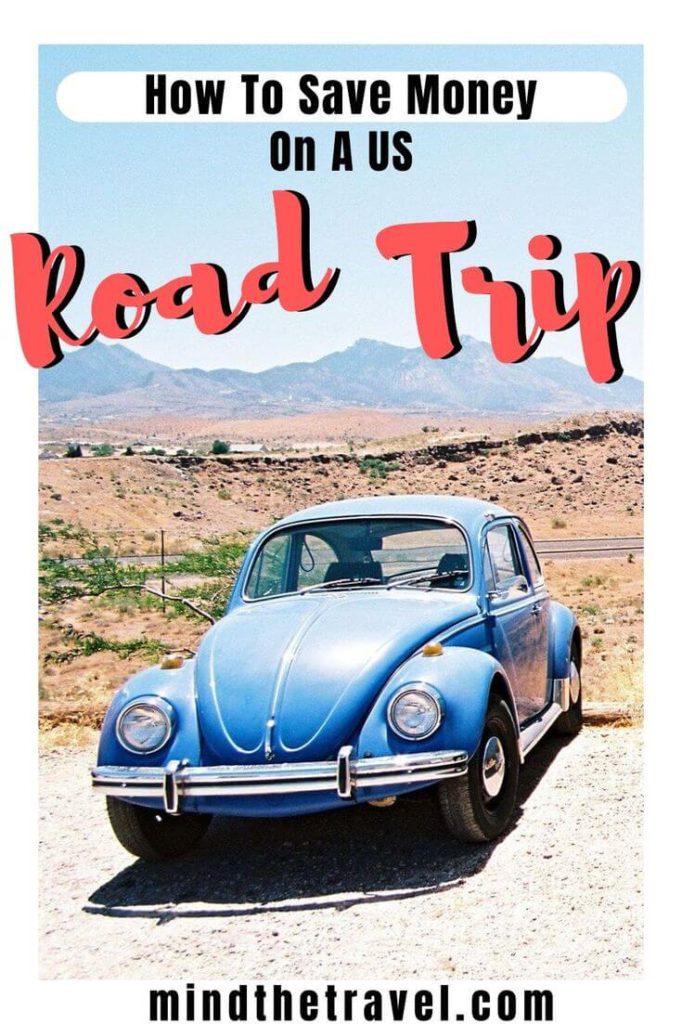



Brinda
So many valuable details on saving money on a road trip! I’ll save this post for my epic journey!
Sabs
I have always wanted to do Route 66. I am sure these tips will help me do it much cheaper!
Two Wander
Ooooh yes such great tips, this will definitely come in handy when we plan our own trip!! 🙂
katy gilroy
This is so helpful, I really want to do a US road trip one day and I’d definitely be doing so on a budget! x
Adriane
Thank you for this article! So much great information!
Jeremiah
Lot of good stuff. We love road trips and have a couple planned for this year. Definitely going to use some of these tips.